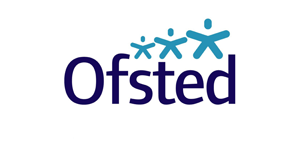Verbal and Non-Verbal Communication in Coaching

Listening, reflecting, and asking with intention
This compilation is an educational resource developed by the British School of Coaching. This series is compiled as a foundational resource for coaches in training. Each article introduces a practical coaching tool or model, grounded in theory and supported by real-world application. Whether you’re preparing for ILM coaching qualifications or looking to deepen your understanding of best practice in coaching, this series offers research-informed insights to strengthen your coaching toolkit.
Effective communication lies at the heart of powerful coaching. The way a coach listens, asks questions, and responds—both verbally and non-verbally—can transform a conversation from transactional to transformational.
In executive and senior-level coaching, these communication skills become even more critical. Coachees at this level expect precision, presence, and professionalism. They also bring complex organisational pressures and nuanced dynamics, which require equally sophisticated responses from the coach.
The Two Pillars of Coaching Communication
1. Active Listening
Active listening is more than hearing words—it is about deeply focusing on the coachee with the assumption that insight and solutions reside within them. This requires the coach to adopt a specific orientation marked by:
- Empathy – Seeing the world through the coachee’s lens
- Acceptance – Unconditional respect for the coachee as a person
- Congruence – Being authentic, transparent, and present
- Concreteness – Anchoring in specifics rather than vague generalities
When coachees sense that the coach is genuinely listening and seeking to understand, trust deepens—and so does the dialogue.
2. Reflection
Reflection involves restating or paraphrasing what the coachee has expressed. This practice:
- Clarifies understanding for the coach
- Helps the coachee organise their thoughts
- Demonstrates attentiveness and care
Together, active listening and reflection foster emotional safety, clarity, and motivation. They also move the coaching from surface-level to deeper meaning.
The Role of Verbal Communication
Verbal communication in coaching is purposeful and precise. It involves:
- Asking questions rooted in the coachee’s language and concerns
- Avoiding judgement, advice-giving, or leading statements
- Using summarising and paraphrasing to check understanding
- Encouraging insight through curiosity-driven dialogue
Verbal communication must stay flexible and responsive. While the coach may be trained in models and tools, the coachee leads the content—the coach leads the process.
The Power of Non-Verbal Communication
Non-verbal communication reinforces, contradicts, or subtly shifts the tone of what is being said. Coaches should pay close attention to:
- Eye contact – Appropriate and steady, not overpowering
- Facial expression – Attuned to the coachee’s emotional tone
- Posture – Open and grounded, mirroring where appropriate
- Gestures – Supportive but not distracting
- Microexpressions – Noticing tension, discomfort, or incongruence
Similarly, coaches should observe the coachee’s body language for cues—sometimes their posture or expression says more than their words.
Intentional Questioning in Coaching
Coaching questions differ fundamentally from those in training or performance management. They are:
- Rooted in curiosity
- Not designed to test or evaluate
- Built to reveal insight, not deliver information
Types of Questions:
- Historical – “How have you managed this in the past?”
- Consequential – “What might happen if you take that action?”
- Big picture – “How might this decision affect your team or board?”
- Assumption-based – “What makes you say that’s the only way?”
Open vs Closed Questions:
- Open questions invite exploration and depth (e.g. “What does success look like for you?”)
- Closed questions serve to confirm or clarify but may limit reflection (e.g. “Is that true?”)
A skilled coach uses both types appropriately, with a bias toward openness.
Summarising to Support Progress
Summarising is an essential skill to:
- Reinforce understanding
- Identify themes
- Prepare for next steps or action planning
A good summary gathers key points and reflects them back clearly, allowing the coachee to affirm, revise, or extend their own thinking.
Common Pitfalls to Avoid
- Pretending to understand – It’s okay to say, “I lost track—can you help me refocus?”
- Over-interpreting feelings – Stay with what’s offered, not assumptions
- Missing emotional cues – Pay attention to what is not being said
- Speaking too much – Stay concise and focused
References:
- Rogers, C. (1961). On Becoming a Person. Houghton Mifflin.
- Cox, E., Bachkirova, T., & Clutterbuck, D. (2018). The Complete Handbook of Coaching. 3rd ed. SAGE.
- Starr, J. (2021). The Coaching Manual. 5th ed. Pearson Education.
- International Coaching Federation (2023). Core Coaching Competencies. www.coachingfederation.org






